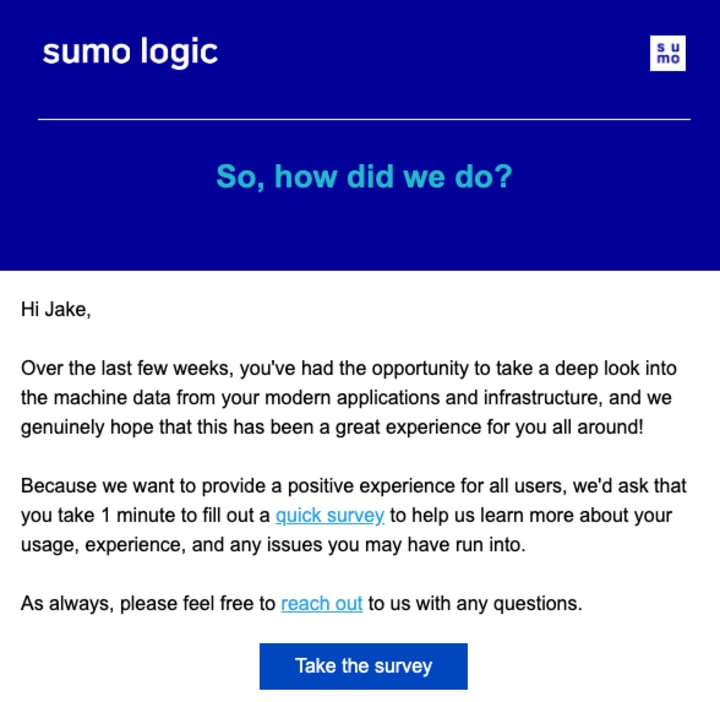
Customer feedback is the most valuable information for the company. When you analyze consumer opinion about your product, you have the opportunity to improve the company and get unexpected insights. To truly measure customer satisfaction, you often have to initiate surveys rather than wait for random reviews on the Internet.
Why conduct customer satisfaction surveys
The main purpose of such surveys is to determine the degree of satisfaction of consumers with an experience with your company and product. Based on the results of the survey, the Customer Satisfaction Score (CSAT) is calculated on a scale from 1 to 10. Over time, the CSAT is compared to the previous value. Analyzing your CSAT and survey responses can help you understand what needs to be improved.
Poorly conducted surveys do not bring significant results and make analytics difficult. If a customer has a positive experience after interacting with your brand, but then “ran into” a stupid survey, their impression of the company can be greatly spoiled. Therefore, it is so important not to make mistakes in creating surveys. Let's talk about the most common of them.
16 Common Survey Mistakes
1. Missing survey goal
A clear survey goal determines the duration of the survey, the number and quality of questions. Each question works towards a goal. Do not try to cover a wide range of issues with one survey: this will complicate the survey and cause negativity among respondents.

The respondent must also understand what the purpose of the survey is and why it is important to take part in it.
2. Too many or too few open-ended questions
How many open-ended questions should you add to the survey? The answer is different for each case. Keep in mind that data processing tools do not recognize open-ended questions, so you will have to manually analyze these answers.
This does not mean that you should avoid open-ended questions altogether. They can lead to a deeper understanding of customers, provide valuable insights, and reveal weaknesses you didn't even know you had.
So use open-ended questions, but don't overdo them. Otherwise, you will overload the respondent, who may get tired of answering your questions, and the researcher, who will have to analyze the answers.
3. Ignoring the demographic characteristics of respondents
Before analyzing the results of the survey, it is necessary to understand your target customer base. Perhaps you should separate the opinion of one group of respondents from another, or even exclude certain individuals from the survey. For this reason, we recommend that you do not neglect questions about the demographic characteristics of the respondents. Questions about age, gender, profession, social status most often begin or end the survey.
If you are worried that the respondent will not want to provide any information about themselves, add response options such as “I do not want to talk” or “other” with the opportunity to leave a comment.
4. Questions are too vague
Compare two questions:
- Did you enjoy working with us?
- How would you rate the customer support and customer service?
The first question is vague. The most likely answers — "yes" or "no",and they will not bring much benefit to the researcher. The second question is more specific and deep. Respondents will not limit themselves to a one-word answer and will add details.
5. Difficult questions that don't have clear answers
“How would you rate a purchase from us, would you recommend our company to your friends?”. It is difficult to answer such a question, and it is no less difficult to analyze the answers. Break this question into two, and you will get valuable information for each.
Difficult questions are a waste of time for both the company and the client. Always remember the purpose of the study. Each question should bring you closer to achieving this goal and provide accurate data.
6. Survey is too short or too long
If there are too many questions, most users will close the survey before it ends. Nobody likes wasting time.
It is even worse if the respondent answers the remaining questions in a hurry. Therefore, the duration of the survey has a direct impact on the result.
Questions that are too short are often uninformative because there is not enough data to draw any conclusions. Look for a balance between the length of a survey and its value. There should be so many questions that you can solve a specific business problem without taking too much time from customers.
7. Leading questions
Of course, any company is flattered when customers speak positively about it. However, the survey should not push respondents to do so. Just like you don't need to pass off your own opinion as correct.
Compare two questions:
- Is it valuable to you that our customer support rep responds in less than 10 minutes?
- How long do you think it should take for a customer support rep to respond?
In the first question, clients will agree that the speed of response is important to them, but they will not be able to specify the waiting time. In the second question, respondents will answer as they see fit.
8. Collection of false information
Often in surveys you can find a question like this: “On a scale of 1 to 10, how comfortable is it for you to interact with customer support?”. Below is a scale for answers. What about those respondents who have not had to interact with this service? They answer at random. You should never predict the behavior of customers and generalize them. When you create a survey, think of different scenarios and include the "no data" option.
9. Imposing surveys on clients
There are customers who never take surveys from companies, even if it is a tiny survey, that won't take long. Just deal with it. Invite customers to leave feedback unobtrusively. Clients are extremely negative if they are forced to participate in the study.
Explain to consumers the value of the survey. Tell them that their opinion will help improve the customer experience.
10. Survey results are scalable
No matter how large the sample of respondents, it is foolish to assume that the opinion of this group coincides with the opinion of every person on earth. Survey results are limited and should not be scaled to a city, region, or country.
11. Survey completed, but no promised improvements
The main mistake is to do nothing with the results of the survey. Customer satisfaction surveys are conducted to find out what customers think about your company. Find out what customers like or dislike. Ideally, after conducting the survey, the company adjusts its business processes and improves the product or service.
Positive ratings indicate that the company is on the right track. When you find aspects that delight your clients, keep working on them. If you get negative ratings, fix the shortcomings that caused dissatisfaction.
The results of the survey may reveal benefits that are worth using in marketing campaigns to attract new customers.
12. Typos and grammatical mistakes
Grammar and spelling mistakes in surveys scare customers away. If the service you chose to create the survey doesn't have built-in spelling and grammar checking, check it yourself. Misspelled questions can confuse respondents, cause laughter or annoyance.
13. Hasty publication of the survey
Every project has deadlines. However, even if the company is online, focus on quality over speed. First of all, take enough time to develop an effective questionnaire. Check that there are no errors in it, that all forms work, and that the answer options correspond to the questions.
After receiving the results of the study, do not rush to publish them, check the correctness of the conclusions, and prepare high-quality infographics.
14. Gaps in the survey structure
We have already mentioned this problem indirectly in the previous paragraph. It's a big mistake to forget to add a question or answers to it. If there are too many mistakes in the survey structure, users will refuse to complete it.
15. Selecting ineffective survey distribution channels
If you choose the wrong distribution channels, the result will be insignificant. The platforms for placing the survey depend on the purpose of the study and the characteristics of the target audience. Focus on the customer journey map. It is necessary to offer clients to take a survey at the moment when they have gained a notable customer experience.
16. The language of the survey is difficult to understand
No matter how complex the research topic, customer satisfaction surveys should be written in the language of the respondents. Customer-friendly language is a companion of success. Remove jargon, specific vocabulary, unnecessary terminology from the questionnaire. They confuse, annoy and slow down your respondents.
Choose a survey style that is simple and casual. Talk to customers in a friendly manner, and they feel comfortable to answer your questions.
Bad questions in customer satisfaction surveys
"When choosing a product, I pay attention to its ease of use"
Reformulate such a question in an open form: "What is important to you when choosing a product?". So you will collect much more valuable information.
“Did our product meet your expectations, and how useful was it for you?”
A question like this does not provide adequate feedback. Break it into two.
"How good was our product?"
This is a leading question, and it assumes that the client must have had a pleasant experience. If this is not the case, the user will be confused with the answer. Instead, you can ask, “How would you rate our product?”
"Was it difficult to use our website?"
The question contains an attempt to predict the client's actions. If the client has not used the site, he will have to come up with an answer, and you will get poor-quality results. Invite the user to rate the site navigation on a scale from 1 to 5. In addition, provide the answer option “no data”.
"How likely are you to recommend our product to a colleague or friend if she asks for your advice?"
There is an assumed pronoun in the question. It would be better to ask, “How likely are you to recommend our product to a friend or colleague?”
“Onboarding process made it easy to get started with the product. Response scale from 1 to 5, where 1 - completely agree, 5 - disagree"
Carefully check questions with answers on a Likert scale. Make sure that the logic is not broken and that the answers on either side of the central value are diametrically opposed.
The article was originally published here.
About the Creator
Altcraft
Interesting and useful articles about marketing, our product and online communications






Comments
There are no comments for this story
Be the first to respond and start the conversation.